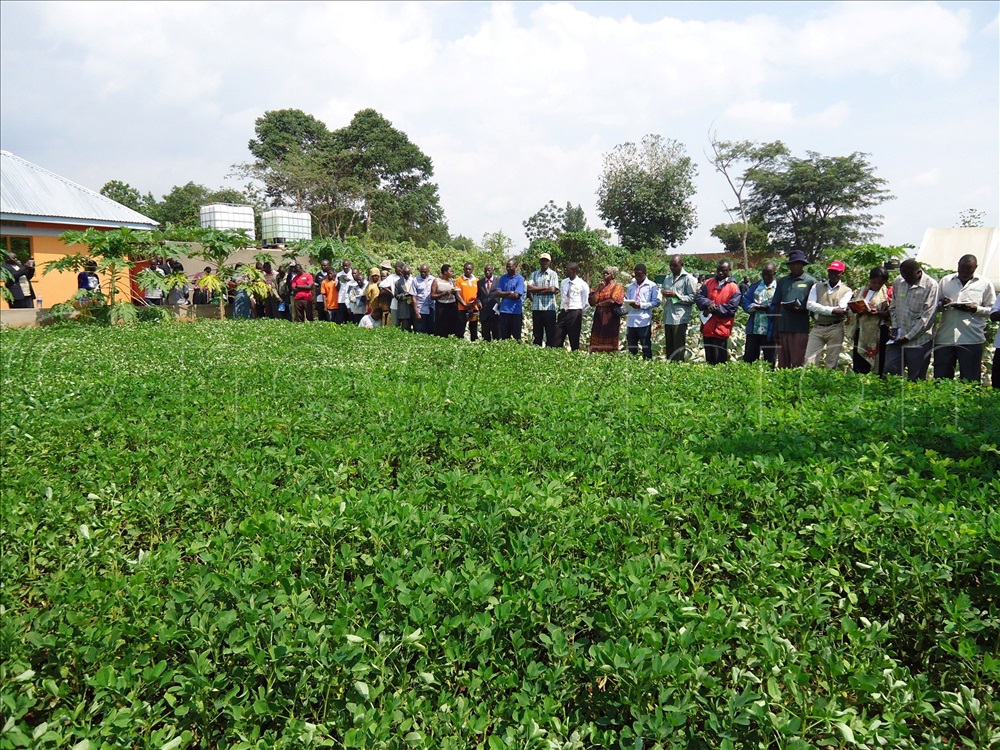By Umar Nsubuga
Gideon Zakke, an agronomist says when you plan well for an acre of groundnuts with a spacing of 40cmx10cm, your seed rate can be 50–80 bags per acre.
If you try red beauty and the Serenut seeds which take 95 to 120 days to grow, Zakke says your average yield, could be 2,000 to 3,000kgs per acre.
“Weeding groundnuts cannot compete effectively with weeds, particularly 3–6 weeks after sowing a farmer should weed,” he advises.
He adds at least two times of weeding is recommended; the first before flowering and one during pegging.
“If early weeding is done well, and crop spacing recommendations are followed, the weeds that come up later are smothered by the vigorous growth of the crop,” he explains.

When weeding, Patricia Nakazibwe, a mixed farmer says it is important to avoid covering the bottom of the plants with earth as this can increase diseases like white mould, which reduce flowering and pod development.
“Once flowering and pegging begin it is advisable to weed by hand pulling, rather than by using a hoe, as this is less likely to disturb any developing pods,” she advises.
Henry Sekyawa, another agronomist says farmers can use herbicides before and after planting groundnuts.
Common diseases
Sekyawa says groundnut rosette disease is caused by a complex of viruses that are transmitted by aphids.
There are two forms of symptoms seen in the crops affected with rosette disease: ‘chlorotic’ (yellow and stunted), green and stunted. If a high yielding non-rosette resistant variety is grown then insecticides will be needed.
There are two main forms of the leaf spot fungal disease. Sekyawa says early leaf spot may occur as early as two weeks after crop emergence. Severe attacks can cause heavy defoliation and result in a large yield loss.
“Late leaf spot occurs later in the season and has nearly circular lesions which are darker than those of early leaf. Late leaf spot does not normally affect yield reduction as severely as early leaf spot,” he explains.
On the lower leaf surface where most of the sporulation occurs, the lesions are black. Chemical control may not be economical for rain-fed crops but the fungicides fentin acetate (Brestan), benomyl (Benlate) or mancozeb (Dithane M-45) can be used at the rate of 50g of the chemical with 20 litres of water. Apply when lesions are first seen and then at 14-day intervals for 3–4 sprays.





